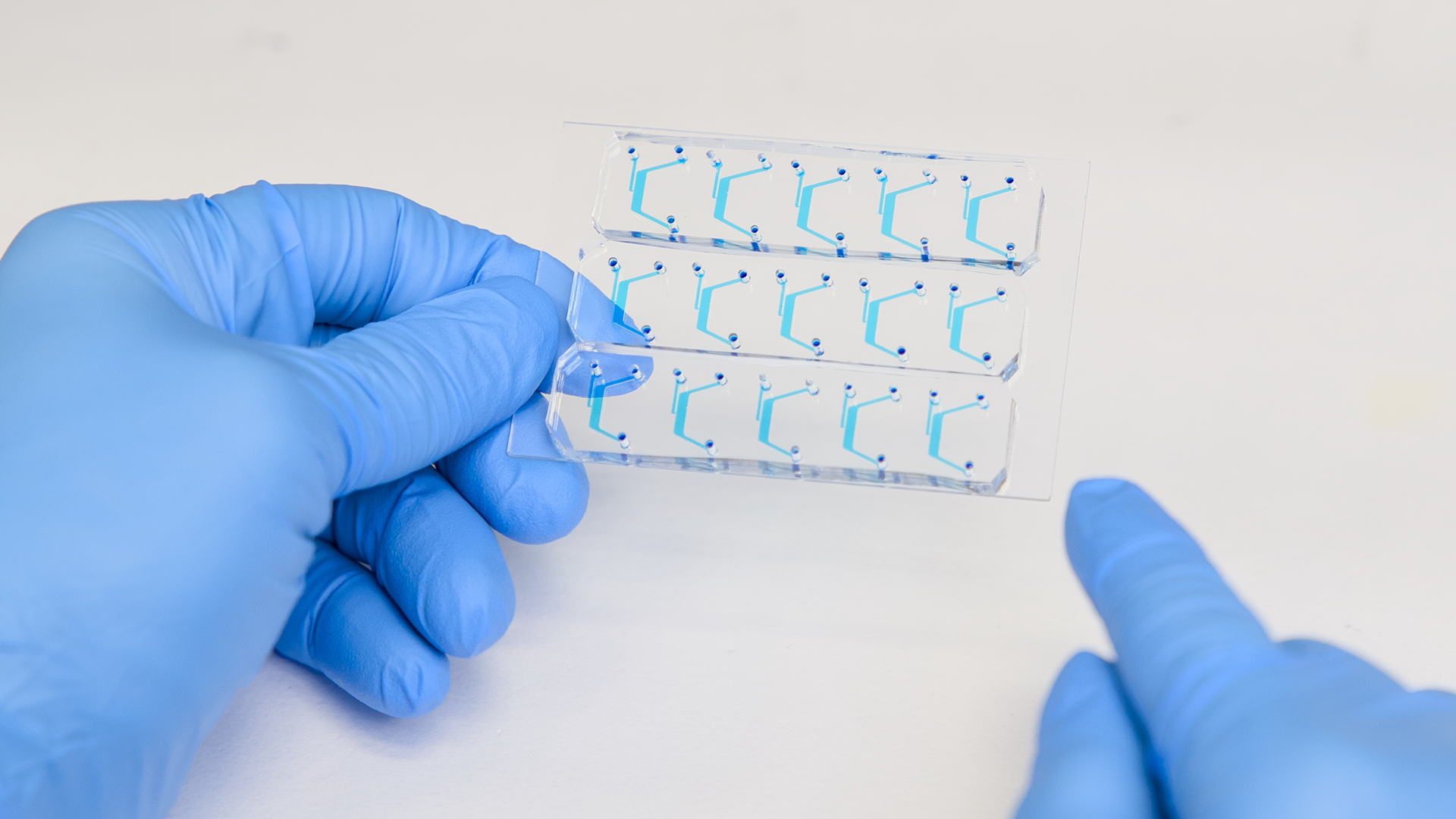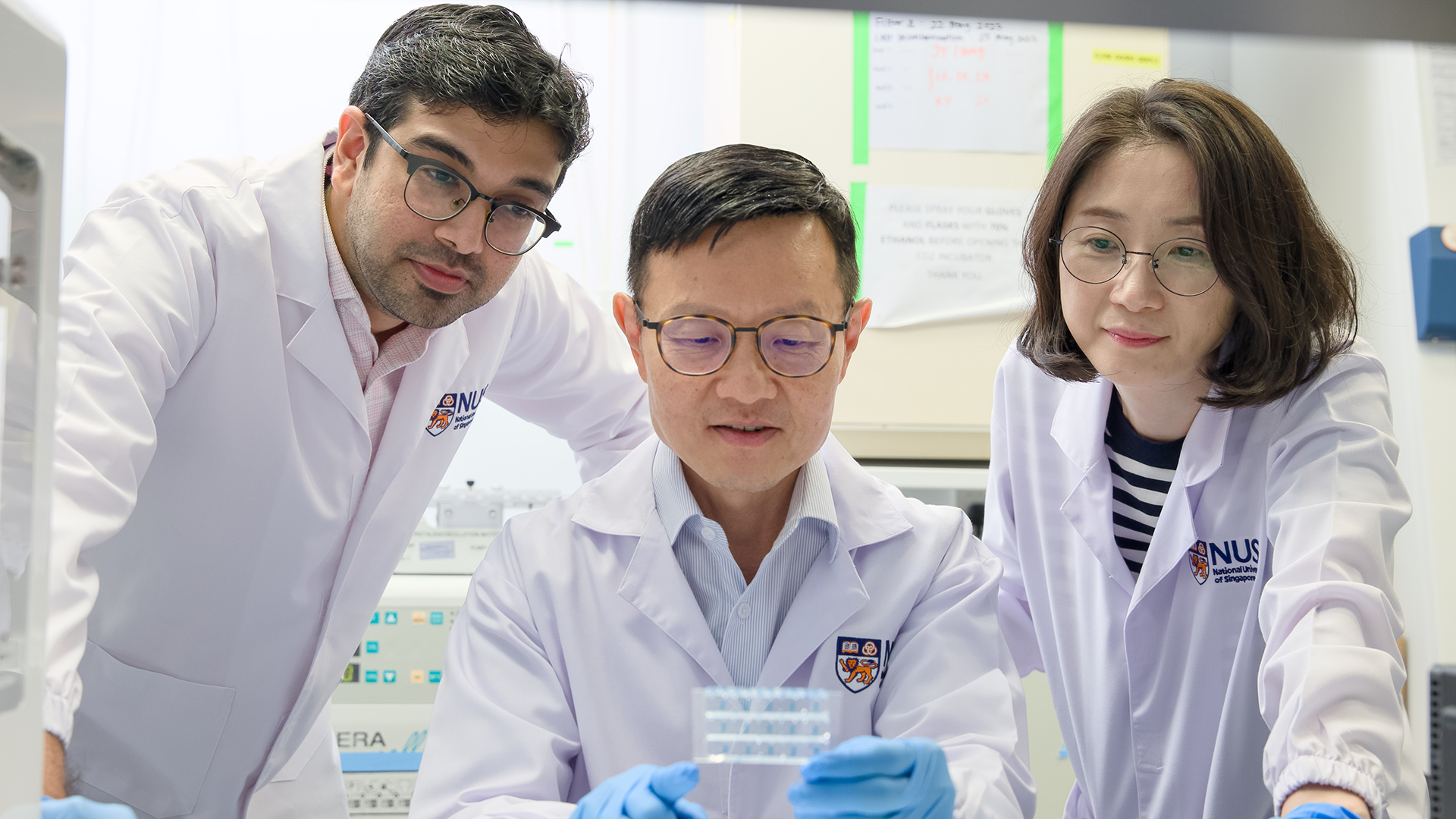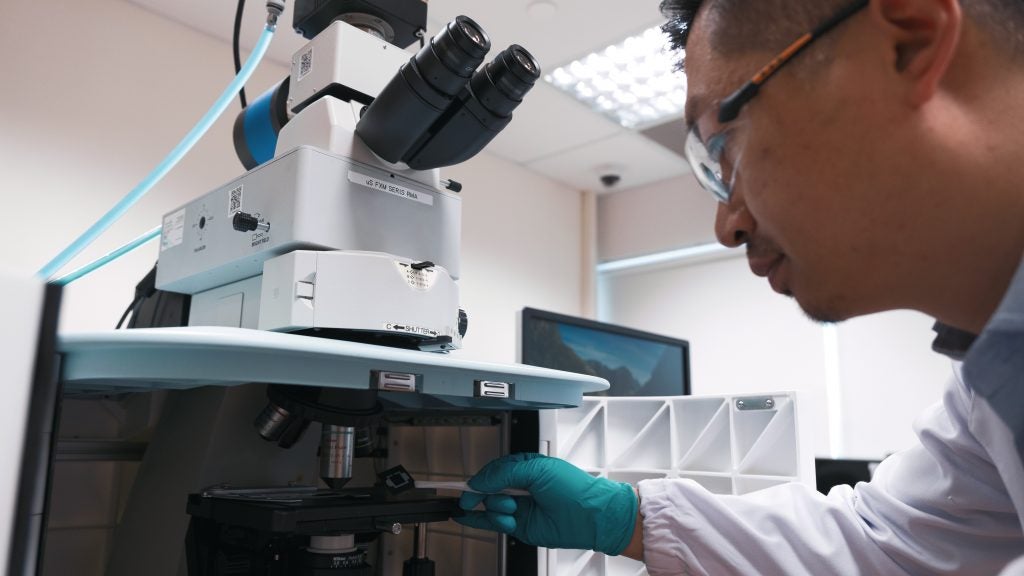
An innovative ‘gut-on-a-chip’ technology developed at NUS could be a major advance in the study of human gut health, opening new insights into the intricate relationship between gut microbes and a range of diseases.
The device, known as the Gut-Microbiome on a Chip (GMoC), is a 3D microscopic replica of the human intestines condensed into a chip roughly half the size of a Singapore five-cent coin. The research team behind its development says it will enable scientists to closely examine how gut microbes interact with each other and impact gut health, using a realistic in vitro model.
“The GMoC system represents a significant advancement in our ability to investigate the effect of the gut microbial community on gut health and diseases,” said Professor Lim Chwee Teck (Biomedical Engineering and Director of the NUS Institute for Health Innovation and Technology (iHealthtech)), who led the research. “By establishing a physiologically-relevant gut model capable of culturing communities of gut microbes, we can gain deeper insights into the role and complex mechanisms of these micro-organisms in maintaining gut health and preventing disease.”
Published in the journal Advanced Science, the study highlights how the GMoC system offers a scalable, reproducible and efficient method to investigate the roles of gut microbes - a key area of interest for preventive healthcare and pharmaceuticals.

Microbial communities
The human intestine hosts trillions of bacteria, fungi, and viruses, collectively known as the gut microbiome. These microorganisms play a crucial role in our overall well-being, with their influence extending from digestion to immune function. Yet the precise ways in which these microbes contribute to health or trigger disease remain largely unclear.
While previous research has identified differences in gut microbiomes between healthy individuals and those with diseases, the complexity of these microbial communities has made it difficult to pinpoint exactly how they function. The GMoC system aims to overcome these challenges by providing a more accurate, scaleable and dynamic representation of the human gut.
The 3D ‘microgut’ model simulates key features of the gut environment, including food movement, oxygen levels, and the structure of the gut lining. It also allows researchers to culture diverse microbial communities under conditions that closely mimic those in the human body, facilitating real-time investigation. This could lead to the identification of novel therapeutic targets and the development of new treatments to modulate the gut microbiome, improving health and clinical outcomes.

Enhanced realism
One of the critical aspects of the GMoC system is its ability to replicate the intestinal villi—tiny finger-like projections that absorb nutrients. The spatial arrangement of microbes within these structures influences how they organise, interact, and affect the gut’s response to different stimuli. Additionally, the platform can produce mucin, a key component of the gut lining that defends against microbial invasion and establishes the interface between gut bacteria and the host.
The researchers say this enhanced level of realism makes the system a more complete and physiologically relevant model compared to existing in vitro systems. It allows scientists to study the interactions between different microbial species with unprecedented detail, paving the way for new discoveries in gut microbiome research.
The platform’s scalability also means that multiple tests can be conducted on a single chip, making it a versatile tool for large-scale studies. As the research progresses, the team aims to further refine the GMoC system by incorporating more complex mechanical cues, enhancing cellular complexity, and introducing oxygen gradients to better simulate the human gut environment.
The GMoC system holds great potential not only for advancing our understanding of gut health but also for commercialisation. The research team is working on reducing manufacturing costs and standardising production processes, with the goal of bringing this innovative device to market.





